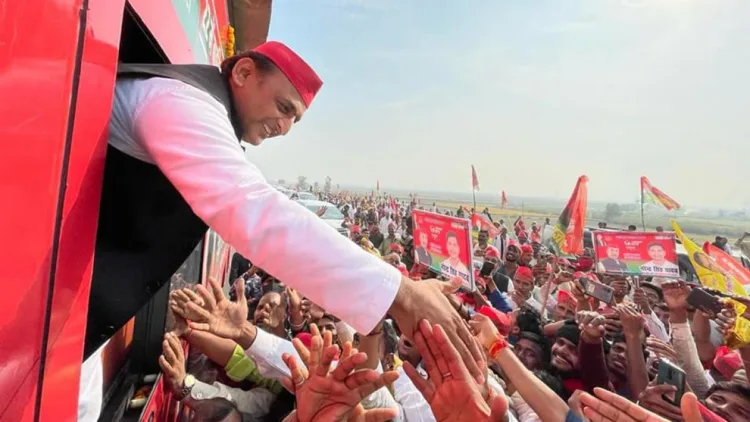The recent electoral results in Uttar Pradesh have underscored a notable resurgence of social engineering, exerting a significant influence on the outcome and margin of victory for the Bharatiya Janata Party (BJP) in the state. Although the BJP is poised to form the government safely with its alliance partners, the situation in Uttar Pradesh has raised numerous questions, both internally within the party and externally among observers. The sole question remains, ‘What went wrong in UP?’
Akhilesh Yadav’s Samajwadi Party (SP) managed to secure 37 seats in Uttar Pradesh, compared to the BJP’s 33 seats. This is a notable contrast to the 2019 Lok Sabha elections, where the BJP emerged victorious in 62 out of the 80 seats contested in the state. The decline from 62 seats to 33 represents a significant setback for the BJP, prompting a critical analysis of Akhilesh Yadav’s electoral strategy.
The origins of social engineering in Uttar Pradesh can be traced back to the Bahujan Samajwadi Party’s Mayawati era of 2007, when she strategically mobilised a coalition of Dalits and Brahmins to consolidate political power. This historical context underscores the enduring influence of social engineering tactics in shaping electoral outcomes in the state.
Building on this model, the BJP effectively employed social engineering tactics in the 2014 and 2019 elections. However, in the recent polls, the tables turned, signifying a shift in the political landscape.
However, unlike in previous elections, there was a significant wave of anti-incumbency against the sitting MPs. Many political analysts have highlighted this as a key factor contributing to the below-average performance in the state. Additionally, multiple theories suggest that the ticket allocations were not appropriate, further exacerbating the situation.
Notably, Akhilesh Yadav, focused his electoral strategy on the ‘M’ factor, namely the Muslim community, while downplaying the influence of the ‘Y’ factor, representing the Yadav community, traditionally associated with his party. This strategic move was evident in the limited representation of Yadavs in the Samajwadi Party’s candidate list, with only five Yadavs, all from his own family, among the 62 candidates.
Despite internal discontent and murmurs of dissent, Akhilesh Yadav maintained composure, demonstrating astute political acumen and emerging as a formidable leader. His ability to navigate complex caste dynamics and strategically allocate tickets to Kurmis and other caste groups traditionally aligned with the BJP showcased his adeptness in coalition-building.
Akhilesh Yadav’s decision to field Dalit candidates in critical constituencies such as Meerut and Faizabad proved to be a strategic masterstroke, unsettling the political landscape and posing a formidable challenge to incumbent Chief Minister Yogi Adityanath.
His success in the recent elections, coinciding with the backdrop of the Ram Mandir, underscores his growing influence and political prowess, further bolstered by the support of his wife, Dimple Yadav, an elected lawmaker from Mainpuri.
Akhilesh Yadav’s rise signifies a paradigm shift in North India’s political landscape, characterised by a departure from traditional caste and religious affiliations towards a more inclusive and issue-based approach.
However, challenges persist within the Samajwadi Party, with reports of discontent among workers in certain constituencies over candidate selection. Despite these internal challenges, Akhilesh Yadav’s resounding victory underscores his growing influence and political ascendancy in Uttar Pradesh.
The BJP faces a formidable challenge due to the uncertain rise of Akhilesh in a state where they enjoyed a clear mandate in two Lok Sabha and two assembly polls. It’s intriguing to observe how the BJP will navigate Akhilesh’s social engineering tactics and manage the intricate caste politics of the region. The setback in Uttar Pradesh has undoubtedly been a significant factor contributing to their failure to reach the milestone of 370 or the magical figure of 400 seats.











![A Representative image [ANI Photo]](https://organiser.org/wp-content/uploads/2025/12/representative-image-e1765612818961-120x70.webp)







Comments